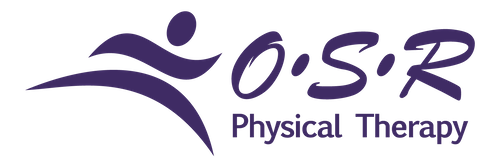Blood Flow Restriction Training
OSR Physical Therapy is certified in Blood Flow Restriction (BFR) Training from the Owens Recovery Science program. We use the gold standard for BFR, the Delphi Personal Tourniquet System. This device is an FDA-approved class III tourniquet, and contains a Doppler system within the blood flow restriction cuff. This means we have the most accurate way possible to measure blood flow in the extremity and can precisely occlude the appropriate amount of flow. Safety features within the device include rapid shut offs, automatic times, alarms and the Doppler measurement system. The following is from Owens Recovery Science, and is a patient handout that describes Blood Flow Restriction (BFR) training:
Blood flow restricted (BFR) rehabilitation is the brief and intermittent occlusion of venous (veins) blood flow using a tourniquet while exercising. Using this technique you can exercise with significantly lighter weight while still creating a hypertrophy (growth) and strength response. Traditionally to get hypertrophy and strength response in your muscles you would need to lift a heavy load. A personalized BFR allows the patient to train safely at a lower resistance (20% of 1RM) and get similar results to training at a higher resistance (60-80% of 1RM).
Application
The goal is to reduce just enough blood flow to create positive changes. However, the amount of pressure used varies between individuals. The size of the patient’s extremity, density of the soft tissue, blood pressure, placement of the tourniquet cuff and width of the tourniquet cuff all must be taken into consideration when determining the patients personalized limb occlusion pressure (LOP). OSR utilizes a specialized tourniquet system with a built in monitor to account for these variables. Additionally, OSR will discuss potential contraindications to this treatment to determine if the patient is a candidate for personalized blood flow restriction rehabilitation training.
Training
On the patient’s personalized LOP is determined then specific exercises will be performed based on patient rehabilitation plan. Even though the resistance is very light, the patient will feel as though the weight is very heavy secondary to the build up of lactate in the training extremity. It is important to complete the total number of sets and repetitions in order to maximize the response from the BFR training. The patient may also feel an increase in hear rate as well as sweating similar to a heavy workout. This is common and expected.
Effects
After the patient has completed the exercise session there will be a build up lactate, which is where many positive responses are taking place. These responses include an increase in growth hormone and other anabolic (positive) muscle growth factors. There will also be a an increase in muscle protein synthesis that takes place.
Side Effects
Adverse side effects are rare. The most common effects after BFR training is residual swelling in the extremity, muscle fatigue, and possible mild soreness. These are transient and usually resolve within 24 hours.
7872 Century Blvd
Chanhassen, MN 55317
Phone: 952-448-9081
Fax: 952-448-9088
16550 West 78th St., Suite B
Eden Prairie, MN 55346
Phone: 952-873-7400
Fax: 952-873-7408
5101 County Road 101
Minnetonka, MN 55345
Phone: 952-512-2400
Fax: 952-512-2409
110105 Pioneer Trail, Suite 201
Chaska, MN 55318
Phone: 952-512-2470
Fax: 952-512-2479
1667 17th Ave E., Suite 107
Shakopee, MN 55379
Phone: 952-224-8120
Fax: 952-224-8121
